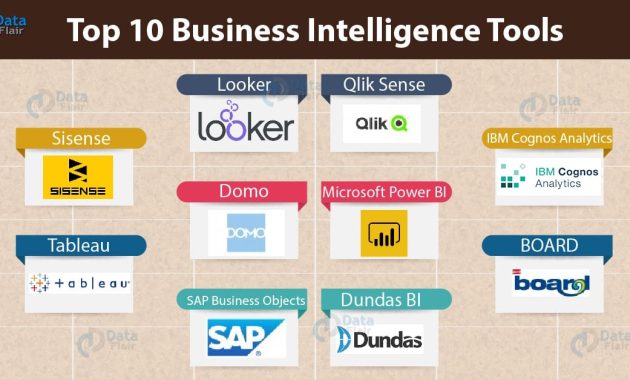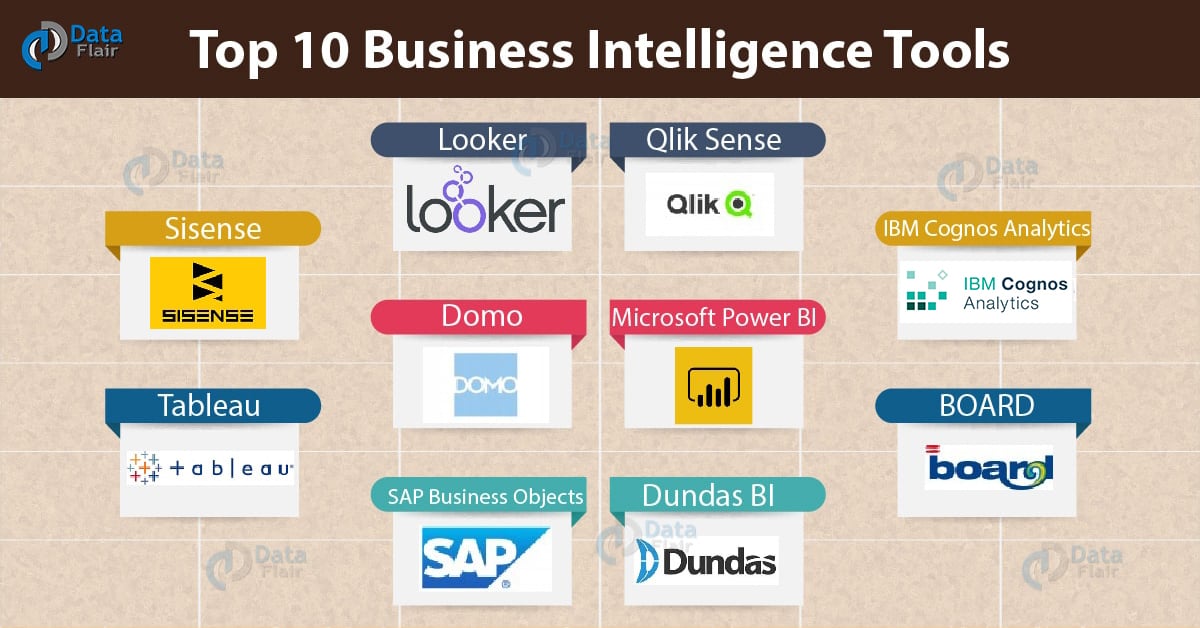
Beginner’s Guide to 9 Business Intelligence Tools To Maximize ROI
In today’s data-driven world, businesses are drowning in information. Yet, they often struggle to extract actionable insights. This is where Business Intelligence (BI) tools come into play. They transform raw data into understandable visualizations, reports, and dashboards. This transformation empowers informed decision-making. For beginners, navigating the landscape of BI tools can feel overwhelming. This guide provides a clear roadmap. We will explore nine essential BI tools. We’ll focus on their features, benefits, and how they contribute to a strong Return on Investment (ROI). We will equip you with the knowledge to select the right tools for your specific needs.
Understanding the Power of Business Intelligence
Before diving into specific tools, let’s clarify what BI entails. Business Intelligence is a technology-driven process. It analyzes data and presents actionable information. This information helps executives, managers, and other end-users make better decisions. The benefits are numerous. They include improved operational efficiency, increased revenue, and a stronger competitive advantage. BI tools achieve these results through various capabilities. These capabilities include data extraction, data warehousing, data mining, and data visualization. The right BI tools are critical for any business aiming to thrive in the current environment.
Key Features to Look For in BI Tools
When selecting a BI tool, several key features are important. These features will ensure the tool meets your business needs. Consider these essential capabilities:
- Data Integration: The ability to connect to various data sources. These sources include databases, spreadsheets, and cloud applications.
- Data Visualization: Creating charts, graphs, and dashboards. These visuals make data easier to understand.
- Reporting: Generating customized reports. These reports provide key performance indicators (KPIs).
- Data Analysis: Offering advanced analytics capabilities. These capabilities include statistical analysis and predictive modeling.
- User-Friendly Interface: An intuitive interface. This makes it easy for users of all skill levels to navigate.
- Scalability: The capacity to handle growing data volumes. The tool should also accommodate increasing user needs.
- Collaboration: Features that allow teams to share insights and collaborate on reports.
Nine Business Intelligence Tools to Consider
Now, let’s examine nine popular BI tools. These tools cater to various business needs and budgets.
1. Microsoft Power BI
Microsoft Power BI is a leading BI tool. It offers a comprehensive suite of features. These features include data visualization, data analysis, and reporting. Power BI integrates seamlessly with other Microsoft products. It is also user-friendly. Power BI is suitable for businesses of all sizes. It provides powerful capabilities at a competitive price point. [See also: Comparing Power BI with Tableau]
2. Tableau
Tableau is another industry leader. It is renowned for its intuitive interface and stunning data visualizations. Tableau excels at creating interactive dashboards. These dashboards allow users to explore data in depth. Tableau is ideal for businesses that prioritize data storytelling and visual appeal. It is a powerful tool for complex data analysis. [See also: Tableau vs Power BI: Which is Right for You?]
3. Qlik Sense
Qlik Sense differentiates itself through its associative engine. This engine allows users to explore data relationships intuitively. Qlik Sense is known for its ease of use. It is also known for its data discovery capabilities. Qlik Sense is well-suited for businesses that need to uncover hidden insights. It is also suitable for those that need to explore data from multiple angles.
4. Looker (Google Cloud)
Looker, now part of Google Cloud, is a modern BI platform. It focuses on data modeling and collaboration. Looker allows teams to define data in a central location. It then enables consistent reporting and analysis. Looker is a good choice for data-driven organizations. It excels in situations where data governance is a priority.
5. Sisense
Sisense is a BI platform designed for complex data. It can handle large datasets and offers advanced analytics capabilities. Sisense is known for its in-memory processing. This processing enables fast data exploration and analysis. Sisense is suitable for businesses that need real-time insights. It also fits those that work with big data.
6. Domo
Domo is a cloud-based BI platform. It offers a unified view of data across various sources. Domo is known for its ease of deployment and its mobile-friendly interface. Domo is designed for collaboration. It allows teams to access data from anywhere. Domo is a good fit for businesses that need a quick, accessible BI solution.
7. SAP BusinessObjects
SAP BusinessObjects is an enterprise-level BI suite. It offers a wide range of features. It also includes reporting, data visualization, and data analysis. SAP BusinessObjects is often used by large organizations. It is suitable for those with complex reporting needs. It is also suitable for those who need to integrate with SAP systems.
8. Yellowfin
Yellowfin is a BI platform focused on data storytelling. It allows users to create compelling narratives around their data. Yellowfin offers features for automated insights and data alerts. It is a good choice for businesses that want to communicate data insights effectively. It is also good for those who want to drive action.
9. Zoho Analytics
Zoho Analytics is a user-friendly BI and analytics platform. It is a good option for small to medium-sized businesses. Zoho Analytics offers affordable pricing. It also offers a range of data connectors. It is known for its ease of use and integration with other Zoho apps. Zoho Analytics is suitable for businesses that need a simple, cost-effective BI solution.
Maximizing ROI with Business Intelligence Tools
Choosing and implementing the right BI tools directly impacts ROI. Here’s how:
- Improved Decision-Making: BI tools provide insights. These insights lead to better, data-driven decisions. This boosts operational efficiency.
- Reduced Costs: By optimizing processes and identifying inefficiencies. BI tools help businesses reduce costs.
- Increased Revenue: BI tools help identify new opportunities. They also help improve customer experiences. This leads to higher revenue.
- Enhanced Customer Satisfaction: Understanding customer behavior is important. BI tools provide this understanding. This helps businesses improve customer satisfaction.
- Competitive Advantage: Leveraging data insights gives businesses a competitive edge. This helps them stay ahead of the competition.
The key is to align your chosen BI tools with your business objectives. Ensure your team receives adequate training and support. Regularly evaluate the effectiveness of your BI implementation. Continuously refine your approach to maximize ROI. [See also: How to Measure the ROI of Your BI Implementation]
Implementing a BI Strategy for Success
Implementing a successful BI strategy involves several key steps:
- Define Your Goals: Clearly define your business objectives. Identify the key metrics you want to track.
- Assess Your Data: Evaluate your existing data sources. Determine data quality and accessibility.
- Choose the Right Tools: Select BI tools that align with your needs. Consider your budget and technical expertise.
- Implement and Integrate: Implement the tools. Integrate them with your existing systems.
- Train Your Team: Provide training to your team. Ensure they can effectively use the tools.
- Monitor and Evaluate: Continuously monitor the performance of your BI implementation. Evaluate your results. Make necessary adjustments.
Following these steps will set you on the path to BI success. This success will help you maximize your ROI.
Conclusion: Embracing Data for Business Growth
BI tools are essential for any business striving for success. They unlock the power of data. They empower informed decision-making. This guide provides a solid foundation. It helps beginners navigate the BI landscape. We discussed nine powerful BI tools. We also covered how to maximize ROI. By embracing data and leveraging the right tools, businesses can achieve significant growth. They can also gain a sustainable competitive advantage. The journey into Business Intelligence begins with understanding. It continues with selecting the right tools. It culminates in data-driven success. Start your journey today. Transform your data into a powerful asset. Drive your business toward a brighter future.

